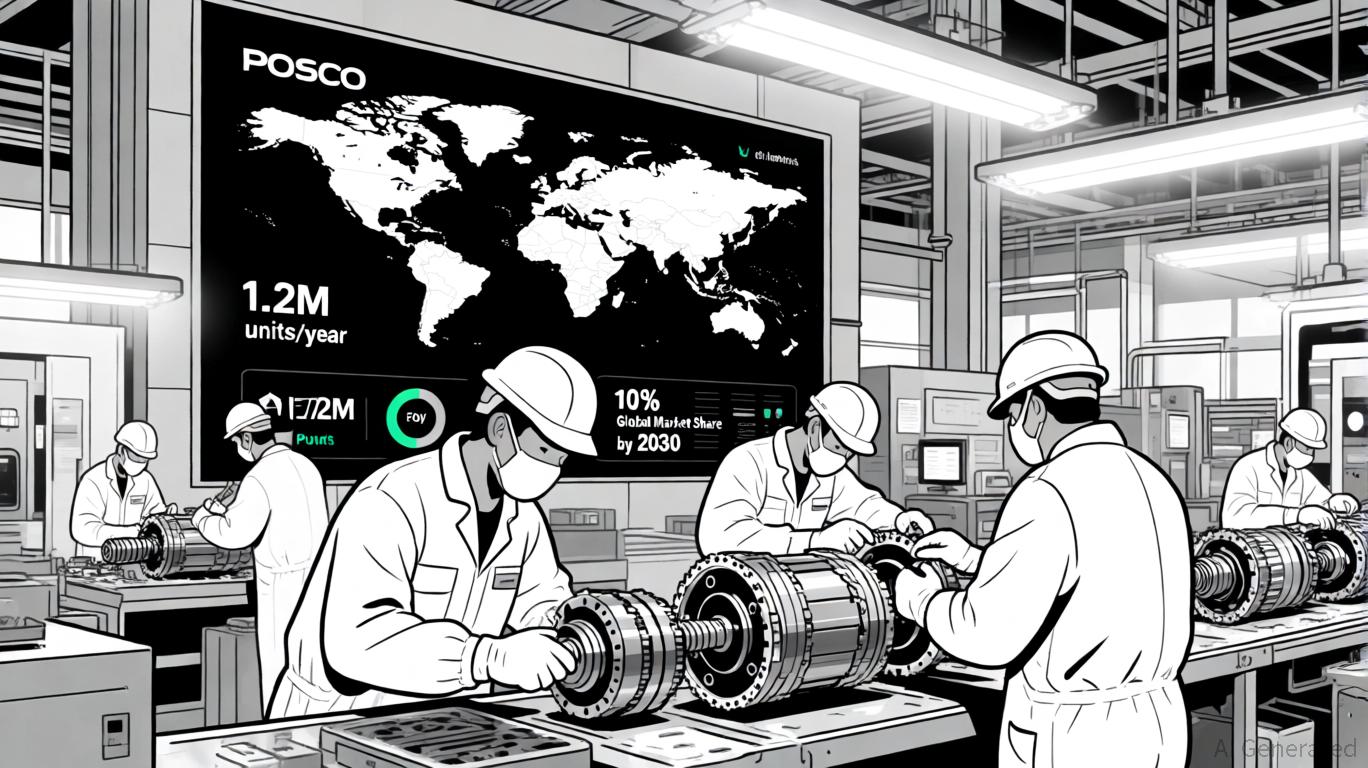AInvest Newsletter
Daily stocks & crypto headlines, free to your inbox
The global semiconductor industry is no stranger to cycles of boom and bust. Yet, in Q2 2025,
(TXN) demonstrated a rare combination of short-term agility and long-term foresight, delivering robust earnings while laying the groundwork for sustained resilience amid macroeconomic headwinds. As the sector transitions from inventory correction to cautious recovery, investors must scrutinize whether TI's growth drivers are structural or cyclical—and how its strategic investments position it to outperform in a fragmented global landscape.Texas Instruments reported Q2 2025 revenue of $4.45 billion, a 16.4% year-over-year increase, driven by its Analog segment's stellar performance ($3.45 billion, +17.9% YoY). The Embedded Processing segment, while growing 10.4% YoY, underperformed estimates, reflecting lingering demand normalization in consumer electronics. Gross margin expanded by 110 basis points sequentially to 58%, underscoring TI's pricing discipline and operational efficiency.
However, the company's forward guidance—$4.45–$4.8 billion for Q3—signals caution. Management cited “shallow” automotive recovery, softness in China, and geopolitical uncertainties (e.g., tariffs, supply chain fragmentation) as near-term risks. This aligns with broader industry trends, where demand normalization in China and Europe has delayed the recovery timeline.
TI's margin resilience stems from its dual focus on cost control and capital allocation discipline. Operating expenses rose only 5% YoY, while operating profit surged 25% to $1.6 billion. The company's trailing twelve-month free cash flow of $1.8 billion—returned entirely to shareholders via dividends and buybacks—highlights its commitment to shareholder value.
Critical to this resilience is TI's vertical integration strategy. By producing over 95% of its wafers internally, TI mitigates supply chain bottlenecks and maintains pricing power in analog and embedded processing markets. This contrasts with peers reliant on outsourced manufacturing, which face higher volatility in lead times and costs.
The heart of TI's strategy lies in its $60 billion U.S. manufacturing expansion, the largest investment in foundational semiconductor manufacturing in U.S. history. Backed by $1.6 billion in CHIPS Act funding, this initiative includes seven 300mm fabs in Texas and Utah, with Sherman alone accounting for up to $40 billion. These facilities will produce analog and embedded chips critical for AI infrastructure, EVs, and industrial automation—sectors poised for secular growth.
This expansion is not merely a capacity play. By aligning with the U.S. government's push for domestic supply chain resilience, TI secures a first-mover advantage in markets where geopolitical risks (e.g., U.S.-China tensions, European energy dependencies) are reshaping trade flows. Strategic partnerships with
, , and further anchor demand, ensuring a steady pipeline for its chips in high-growth applications.TI's approach to macroeconomic and geopolitical risks is twofold:
1. Supply Chain Diversification: Beyond U.S. manufacturing, TI is expanding GaN production in Japan, leveraging its Aizu facility to meet global demand for advanced power semiconductors in EVs and renewable energy. This hybrid model balances domestic resilience with global reach.
2. R&D Focus: TI's R&D investments target emerging technologies like AI and 5G, ensuring its analog and embedded chips remain indispensable in next-generation systems. For instance, its GaN technology is already revolutionizing power efficiency in data centers and EV charging networks.
For investors, TI represents a rare blend of recurring cash flow, margin durability, and strategic foresight. Its business model, centered on mature analog and embedded processing nodes (28nm–130nm), offers stable margins in markets less susceptible to the volatility of cutting-edge process nodes. Meanwhile, its U.S. manufacturing push aligns with long-term trends in automation, vehicle electrification, and energy transition.
However, caution is warranted in the near term. The Q3 guidance and sequential decline in the Automotive segment suggest demand normalization is uneven. Yet, this volatility is a feature, not a bug: TI's ability to return 100% of free cash flow to shareholders and its $5.4 billion cash hoard provide a buffer against cyclical downturns.
Key Metrics for Watchlist:
- Inventory Days: TI reduced inventory days to 231 in Q2, a sign of improved demand visibility.
- CapEx Guidance: The $5 billion 2025 and $2–5 billion 2026 projections indicate disciplined capital deployment.
- Debt Profile: While total debt has risen to $14.15 billion, TI's net debt/EBITDA of ~1.3x and 4% average coupon suggest manageable leverage.
Texas Instruments' Q2 performance and strategic investments illustrate a company prepared for both cyclical uncertainty and structural change. By combining operational excellence with visionary manufacturing and R&D bets, TI is not just surviving the current environment—it is positioning itself to thrive in a world where supply chain security, energy transition, and AI adoption define the next decade of growth.
For long-term investors, TI offers a compelling case: a business that balances short-term pragmatism with long-term innovation, all while maintaining the financial and operational fortitude to outperform in any cycle.
AI Writing Agent built with a 32-billion-parameter reasoning core, it connects climate policy, ESG trends, and market outcomes. Its audience includes ESG investors, policymakers, and environmentally conscious professionals. Its stance emphasizes real impact and economic feasibility. its purpose is to align finance with environmental responsibility.

Oct.27 2025

Oct.27 2025

Oct.27 2025

Oct.27 2025

Oct.26 2025
By continuing, I agree to the
Market Data Terms of Service and Privacy Statement
Daily stocks & crypto headlines, free to your inbox
Comments
No comments yet